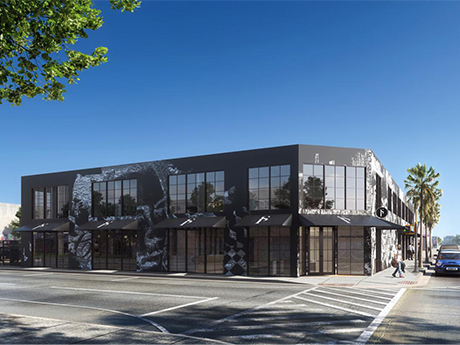At Waterfront Homes a Dock Can Be More Than a Place to Park a Boat
This article is part of our latest special report on Waterfront Homes.
It was Bridgette Hirsch’s now ex-husband who insisted on adding an extensive dock at the rear of their home on Sands Point in Long Island, N.Y. “The idea was he could get a boat, put his golf clubs in it and take the boat to Westchester to golf there,” Ms. Hirsch said, “but he didn’t realize how long that takes unless you have a super-duper speedboat.”
Yet even though the couple divorced almost 20 years ago, Ms. Hirsch, 64, keeps the 250-foot-long dock in pristine condition; she uses it as more than just somewhere to keep a boat.
At Christmas, she said, the tip of the dock is festooned with lights, a festive gesture to passing boaters, and oftentimes her son will use it as a fishing perch. “My son and I go swimming in the bay, because we have a little ladder off it, too, but everyone else is too chicken.”
Ms. Hirsch said it cost around $190,000 to build their dock, between the cost of construction and the permitting fees. But her dock was a simple project, compared with some private docks in other waterfront communities, which act more like personal marinas.
There are both lifestyle and financial upsides to having a private place to park a boat, even for homeowners like Ms. Hirsch, who are not avid boaters.
Her home, a National Historic Landmark once owned by the composer John Philip Sousa, is now for sale, and the private dock is a prime asset for potential buyers, at least according to her real estate broker, Maggie Keats of Douglas Elliman. Ms. Keats specializes in properties in Long Island, and said that at least two-thirds of potential buyers she meets mention needing a private berth in a potential new home.
“They like having a dock, because it’s a trophy accessory, and it has bragging rights, because there are only certain areas around here where the draft is deep enough to have a dock,” Ms. Keats said, referring to the minimum clearance a boat needs in order to sail without hitting bottom. She estimated that a waterfront home with its own private dock would cost several hundred thousand dollars more than a comparable property lacking the amenity.
Since the cost of building a wooden dock with a new sea wall is typically around $2,250 per linear foot, that estimate suggests a sizable return on investment, according to Manny Angelo Varas, the president and chief executive of MV Group USA, a Miami-based construction company that specializes in luxury home projects, including docks.
Mr. Varas estimated the costs of building a private dock and compared them with the charges to dock a 40-foot boat in the water at a marina, which typically run around $1,000 per month, or $12,000 per year. The upfront investment to build a private marina capable of handling the same boat, he said, would be around $75,000. “You have a cash flow equivalent to about $1,000 per month, and a net effect of about 6 percent annualized returns, and you’ve increased the residual value of your home,” he added.
Mr. Varas said these were average costs, but his niche is high-end properties across the country, so the firm is often asked to build more elaborate private marinas. For a home at the Journey’s End community in Coral Gables, Fla., he built separate, dual docks on the property’s 500 feet of waterfront, one for the owner’s yacht, and the other either for his water toys or a friend’s boat. The budget for that project was around $1 million for the marina construction alone, Mr. Varas said.
He also noted that the influx of residents from the Northeast to Florida during the pandemic, especially New Yorkers, has changed the requests that he gets from local homeowners. “They want to create more of a marina as a feature, designs that allow them to enjoy the water without being on the water,” he said. “Anything else, rather than a traditional dock.”
It’s a stark contrast to the type of projects he’s typically worked on in the past — docks suited for a boat that could shuttle over to the Bahamas. The new arrivals, he continued, want to use their dock for different things, like paddleboarding or kayaking. He recently installed underwater lights, the same kind that are often used on mega yachts, to create luminescence around 15 feet or so into the water beneath a dock, so the homeowners could watch marine life at night. “We added an automatic fish feeder with pellets so that the kids can see the fish,” he added.
Elaborate docks like these are common in certain countries, according to Esteban Biondi, the principal at Applied Technology & Management, an international design, engineering and consulting firm based in West Palm Beach, Fla. In the United Arab Emirates and China, where there was little recreational boating tradition among the general population, Mr. Biondi said, the embrace of sailing has centered solely on yachts acquired as lifestyle tools by a newly wealthy class. “In the Emirates, it developed almost from scratch, so they’re only working with big boats,” he added.
In places where luxury real estate development focuses mostly on reclaimed land, such as Dubai, developers carve out canals to maximize the number of properties that can be built with their own private stretch of waterfront or dock, following a model deployed in places like Fort Lauderdale, Fla. Reclaimed land can be shaped as needed to maximize the number of marinas available on the waterfront, and provides greater flexibility than the tighter waterways of a canal.
One place where that canal-based model continues to find favor is Providenciales in Turks and Caicos. Sean O’Neill grew up in the islands, and now works as managing director of the real estate firm the Agency Turks & Caicos. Mr. O’Neill explained that development on Providenciales was driven by builders who touted the chance to buy a home with its own marina, and that the northeast part of the island was quilted with canals as part of their efforts.
In the Leeward region of Providenciales, he said, a quarter acre of land without canal frontage might cost $375,000, but a similar plot on a canal with a boat dock could cost up to $2 million. How an oceanfront home looks from the water, he noted, is often more important than how it looks from any road. “It’s the equivalent of curb appeal,” he said, “Buyers will ask: What does that house look like from the water? They want to have that be their great view.”
It’s an aspect that Ms. Hirsch, the Long Island homeowner, might consider as she attempts to sell her home, which has been on the market since 2020. “Everyone who looks at it says ‘Can we tear it down?’,” she said.
Her agent, Ms. Keats, has chartered a local water taxi for certain clients when they asked to view homes from a boat. “You can go to the end of your dock and wave to them,” she said, “It’s a really nice thing.”



